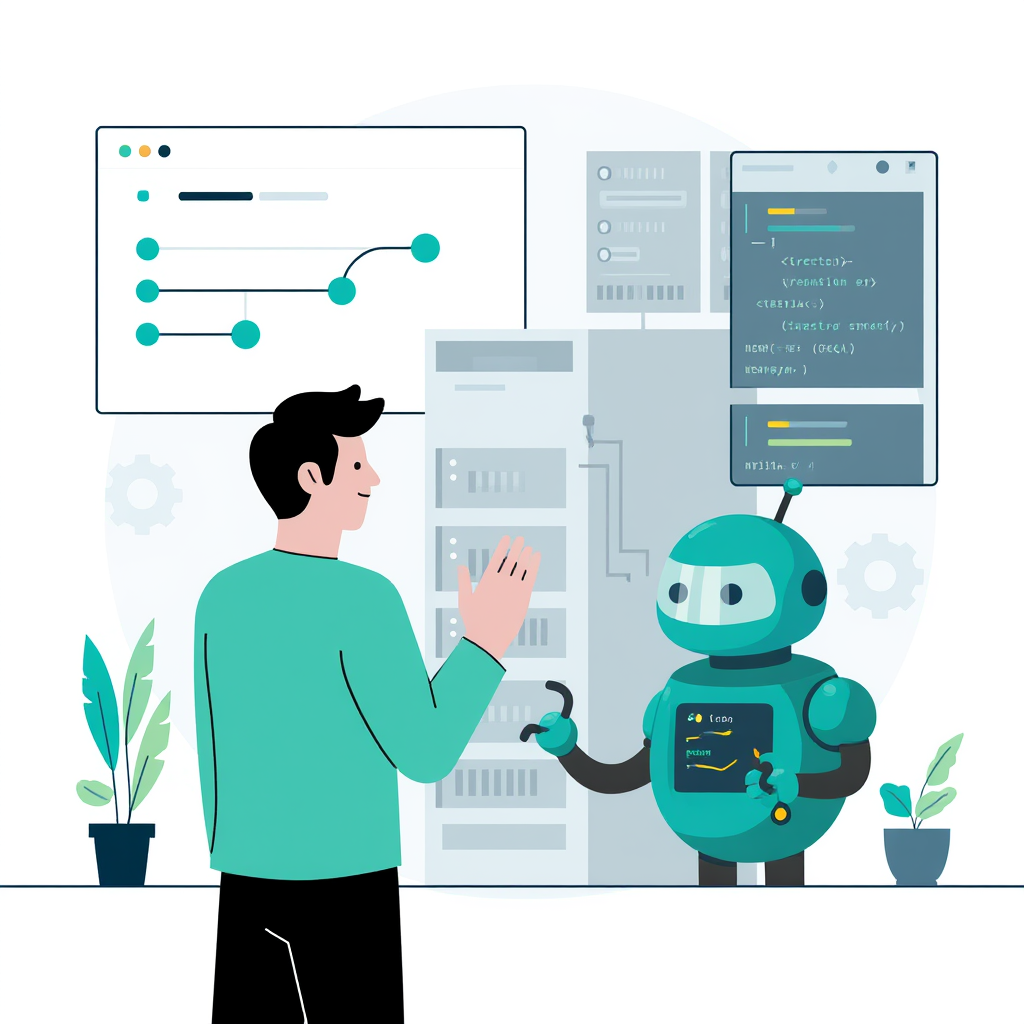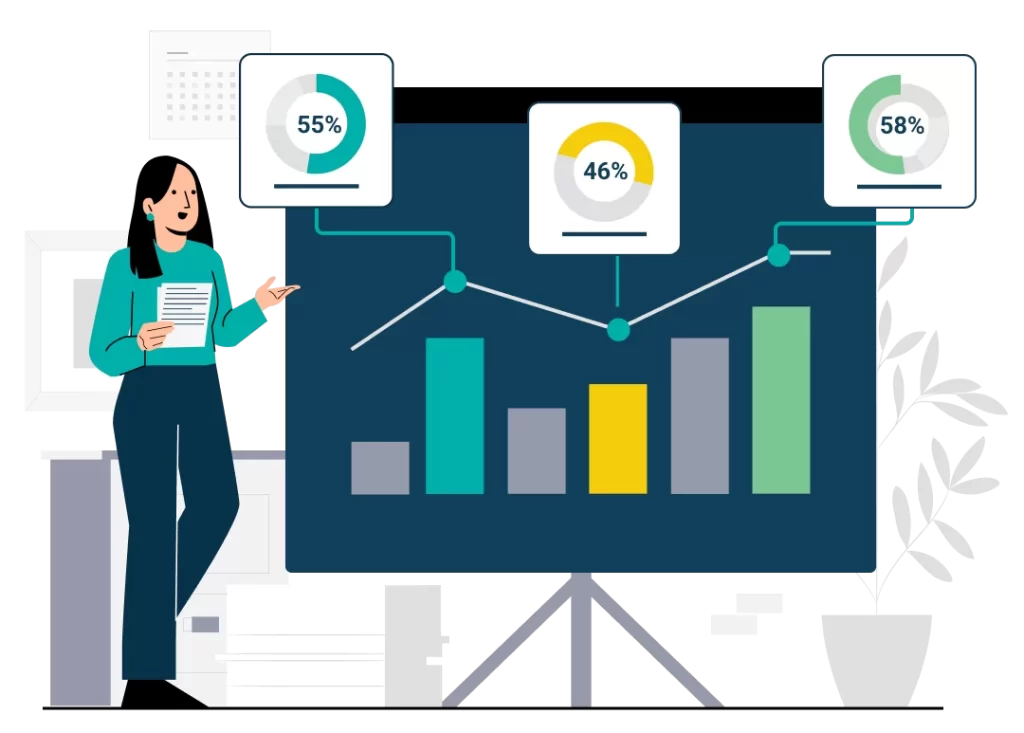Think about how your business responds to events. A customer abandons their shopping cart. A sensor detects equipment running hot. A financial transaction looks suspicious. If you’re waiting until tomorrow’s batch job to react to today’s events, you’re already too late.
This implementation guide is part of our comprehensive framework for building smart data ecosystems for AI, where we explore how real-time processing transforms traditional data architectures into AI-ready streaming platforms that actually respond when things happen.
You don’t need massive infrastructure overhauls or enterprise-scale budgets to get started. Modern cloud services like Confluent Cloud and Amazon Kinesis let you start small and scale up. The payoff? Faster decisions, better customer experiences, and the competitive edge that comes from reacting immediately instead of eventually.
Here’s how to build streaming architectures using Apache Kafka, stream processing engines, and practical adoption strategies. You’ll get the core concepts and a clear roadmap for implementing real-time data processing that changes how your business responds to events.
Before diving in, make sure you’ve sorted out the foundational data architecture decisions for AI readiness, because streaming capabilities build on solid architectural foundations.
What is real-time data processing and how does it differ from batch processing?
Real-time data processing analyses and responds to data as events happen, typically within milliseconds or seconds. Instead of collecting data over time and then processing it all together, real-time systems use event streaming platforms like Apache Kafka to handle continuous data flows without waiting.
Batch processing runs on schedules – usually overnight or at set times. It’s good for historical analysis and reporting, but creates gaps where nothing happens. Real-time systems fill those gaps by processing data as it arrives, enabling immediate responses like fraud detection, personalisation, and operational alerts.
The technical setup is quite different too. Batch systems use data warehouses built for big analytical queries, while real-time systems focus on fresh data and fast access.
Real-time processing needs different infrastructure, but the competitive advantages through immediate response capabilities make it worthwhile. Many businesses use both: real-time streams for immediate actions and batch processing for analytics and machine learning model training.
What are event-driven AI systems and how do they work?
Event-driven AI systems use streaming data to trigger immediate AI responses based on business events. Events are meaningful activities – user actions, sensor readings, transactions, or system changes – that need immediate analysis rather than waiting for the next batch job.
These systems plug AI models directly into streaming data to make real-time predictions and recommendations. When a customer abandons their cart, the event triggers immediate personalised retention campaigns. When sensor data shows equipment anomalies, predictive maintenance models automatically schedule interventions before things break.
The architecture decouples data producers from consumers using message brokers like Apache Kafka, which provides a unified, high-throughput, low-latency platform for handling real-time data feeds. Microservices subscribe to relevant streams and process them independently, so you can scale horizontally without affecting other components.
This creates resilient, distributed systems where AI models consume continuous data flows rather than static datasets. Kafka avoids single points of failure by running as a cluster of multiple servers, partitioning and replicating each topic among them. Your AI workloads keep processing even when individual components fail.
Real-world examples show the practical value. Financial services do real-time fraud detection by analysing transaction patterns as they happen. Retailers provide dynamic pricing based on inventory, competitor actions, and demand. Manufacturers use predictive maintenance to prevent equipment failures through continuous sensor monitoring and AI-driven anomaly detection.
What are the core components of a real-time data processing system?
Event streaming platforms are the central nervous system for real-time data distribution. Apache Kafka dominates enterprise implementations because of its fault tolerance and scalability. Kafka provides distributed event storage so multiple AI consumers can process the same streaming data without interfering with each other, while keeping events in order – essential for consistent AI model training and inference.
Stream processing engines like Apache Flink and Kafka Streams transform and analyse data while it’s moving, not after it’s stored. These engines apply transformations, aggregations, and filtering to raw data flows, preparing structured data for AI consumption. Flink excels at complex stateful processing with precise event-time handling. Kafka Streams offers lightweight processing directly integrated with Kafka.
Real-time databases store processed results for immediate querying and analytics, optimised for fast reads rather than complex analytical workloads. Technologies like ClickHouse and Apache Druid specialise in real-time analytics.
Message producers generate events from applications, databases, sensors, and external systems. Change Data Capture (CDC) tools automatically capture database changes as streaming events, so you can integrate legacy systems without changing application code.
Event consumers include AI models, analytics engines, dashboards, and downstream applications that subscribe to relevant streams. Consumer groups enable horizontal scaling by distributing event processing across multiple instances.
How does Apache Kafka enable event streaming for AI workloads?
Apache Kafka provides fault-tolerant, distributed event storage that lets multiple AI consumers process identical streaming data simultaneously without data loss or consistency issues. This supports diverse AI workloads from real-time inference to batch model training using the same underlying event data, eliminating the data synchronisation headaches common in traditional architectures.
Kafka topics organise events by business domain – user actions, financial transactions, sensor data – enabling efficient AI model training and inference workflows. Topic partitioning supports horizontal scaling while maintaining event ordering within partitions, which is important for AI applications requiring sequential data processing like time-series analysis or user journey tracking.
Producer APIs let applications publish events from databases, web services, IoT devices, and legacy systems without complex integration requirements. Change Data Capture tools automatically stream database changes as Kafka events, enabling real-time AI model updates based on transactional data changes.
Consumer APIs let AI models and analytics services subscribe to relevant data flows with automatic load balancing across consumer instances. Consumer groups distribute processing load while maintaining exactly-once processing guarantees.
Kafka’s configurable retention policies maintain event history for model retraining and replay scenarios essential for AI development workflows.
Integration with Confluent Cloud adds enterprise features including schema registry for data governance, monitoring dashboards for operational visibility, and security controls for regulatory compliance.
How do you implement stream processing with Apache Flink or Kafka Streams?
Apache Flink provides stateful stream processing with precise event-time handling for complex AI workflows requiring accurate temporal analysis. Flink’s windowing operations and state management support advanced analytics including sessionisation, pattern detection, and complex event processing essential for AI applications like fraud detection or predictive maintenance.
Kafka Streams offers lightweight stream processing directly integrated with Kafka infrastructure for simpler transformation and filtering tasks. This tight integration eliminates additional infrastructure requirements while providing exactly-once processing guarantees. Kafka Streams excels at data preparation, aggregation, and simple machine learning feature engineering tasks.
Both engines support windowing operations to aggregate streaming data for time-based AI model features like hourly transaction volumes or rolling averages for trend analysis.
Stateful processing maintains context across events including user sessions, transaction patterns, and equipment operational states essential for AI predictions. Fault tolerance mechanisms ensure processing continues despite failures without data loss or duplicate processing.
Technology selection depends on complexity requirements: choose Kafka Streams for simple transformations and basic aggregations, while Flink handles advanced analytics and AI pipeline orchestration.
Once your streaming architecture is operational, the next step involves implementing MLOps and AI operations for smart data systems to ensure your real-time data flows effectively support continuous AI model training, deployment, and monitoring workflows.
How does event streaming architecture handle unstructured data?
Event streaming platforms transport any data format including JSON, Avro, Protocol Buffers, and binary data without format restrictions. This enables flexible AI workloads that combine structured metadata with unstructured content like images, documents, or audio files.
Schema registry enforces data structure contracts while allowing schema evolution for unstructured content changes over time. Confluent Schema Registry supports backward and forward compatibility rules ensuring AI models continue processing events even as data structures evolve.
Stream processing engines apply real-time transformations to extract structured features from unstructured event payloads including text analysis, image metadata extraction, and document classification.
AI models consume both structured metadata and unstructured content for analysis, enabling applications like sentiment analysis of customer feedback combined with transaction data, or image recognition integrated with user behaviour patterns.
Serialisation formats like Apache Avro provide efficient storage and network transmission for large unstructured payloads while supporting schema evolution capabilities.
What are the costs and benefits of real-time processing for SMBs?
Implementation costs for organisations typically range from £5,000 to £50,000 annually including cloud infrastructure, streaming platform licences, and developer training. Managed services like Confluent Cloud start at approximately £500 monthly for basic workloads, while AWS Kinesis pricing begins around £300 monthly for similar capabilities.
The benefits are measurable: improved customer experience through immediate personalisation, operational efficiency gains from automated responses, and competitive advantages through faster decision-making. Most organisations achieve ROI within 6-12 months through reduced manual processes and enhanced AI capabilities.
Cloud-managed services reduce operational overhead by eliminating infrastructure management but increase ongoing costs compared to self-hosted solutions. Managed platforms provide automatic scaling, security updates, and monitoring capabilities.
Open-source implementations require more technical expertise but offer lower long-term costs if you have the right technical capabilities. Self-hosted Kafka clusters eliminate licensing fees while providing complete customisation control.
Risk mitigation strategies include starting with single use cases to prove value before broader adoption, using managed services initially to reduce complexity, and implementing monitoring to understand system behaviour.
How do you start small with real-time data processing and scale up?
Begin with a single use case like user activity tracking or application logging to prove value and build team expertise without overwhelming existing resources. User activity events provide immediate insights into customer behaviour patterns while requiring minimal integration complexity.
Use managed cloud services initially to reduce operational complexity while learning streaming concepts. AWS Kinesis and Confluent Cloud provide streaming platforms with minimal setup requirements, so your team can focus on business logic rather than infrastructure management.
Implement Change Data Capture to stream existing database changes as events without modifying application code – it’s a low-risk entry point for real-time capabilities. CDC solutions automatically capture insert, update, and delete operations from existing databases.
Start with Kafka Streams for simple transformations and data processing before adopting stream processing engines like Apache Flink. Kafka Streams provides lightweight processing capabilities directly integrated with Kafka infrastructure.
Establish monitoring and observability systems early to understand performance characteristics, processing latencies, and system behaviour patterns. Tools like Confluent Control Centre provide visibility into streaming applications.
Gradually expand to additional data sources and use cases as team skills and infrastructure maturity increase.
For comprehensive guidance on making the right architectural choices that support your streaming initiatives, review our detailed analysis of data architecture decisions for AI readiness, which provides frameworks for evaluating data fabric, mesh, and traditional approaches in the context of real-time processing requirements.
FAQ Section
How long does it take to implement Apache Kafka for a small business?
You can have initial proof-of-concept implementations running within 1-2 weeks using managed services like Confluent Cloud or AWS Kinesis. Production-ready implementations typically require 2-3 months including team training, infrastructure setup, and initial use case development.
Can existing databases work with event streaming without major changes?
Yes, Change Data Capture (CDC) tools like Debezium stream database changes as events without modifying existing applications or database schemas. CDC provides a non-invasive approach to add real-time capabilities to legacy systems.
What happens if the streaming system fails or goes down?
Apache Kafka provides built-in fault tolerance through data replication across multiple servers within the cluster. Event storage ensures no data loss during system failures, and stream processing applications resume from the last checkpoint when systems recover.
How much technical expertise do we need for real-time data processing?
Start with cloud-managed services requiring minimal infrastructure knowledge beyond basic cloud platform familiarity. One experienced developer can manage initial implementation and ongoing operations.
Is real-time processing worth it for small data volumes?
Absolutely. Even small businesses benefit from real-time capabilities through improved customer experience, operational alerts, and competitive responsiveness advantages. Cloud services make implementation cost-effective at any scale.
How do we handle data privacy and compliance in streaming systems?
Event streaming platforms support encryption in transit and at rest, with schema registry enforcing data contracts and structure validation. Event filtering capabilities ensure sensitive data handling compliance with GDPR and other regulations.
Can we integrate real-time processing with our existing AI models?
Yes, stream processing engines can invoke existing AI models via REST APIs or embed models directly in processing pipelines for immediate inference on streaming data.
What’s the difference between Kafka and traditional message queues?
Kafka stores events persistently with configurable retention periods enabling replay and multiple consumers, while traditional message queues delete messages after consumption. Kafka’s persistent storage better supports AI workloads requiring historical data access.
How do we monitor and troubleshoot streaming applications?
Use built-in metrics from Kafka and stream processing engines combined with application performance monitoring tools. Confluent Control Centre provides streaming application monitoring, while custom dashboards track business-specific metrics.
Should we build our own streaming infrastructure or use cloud services?
Start with managed cloud services to focus on business value rather than infrastructure management. Consider self-hosted solutions only after gaining operational experience and reaching significant scale.
How does event streaming work with microservices architecture?
Event streaming provides the communication backbone for microservices architectures, enabling loose coupling and independent scaling capabilities. Each microservice publishes relevant events and subscribes to necessary data flows.
What security considerations apply to real-time data streams?
Implement encryption for data in transit and at rest using industry-standard protocols, configure authentication and authorisation controls for producers and consumers, and apply network security measures to protect streaming infrastructure.












